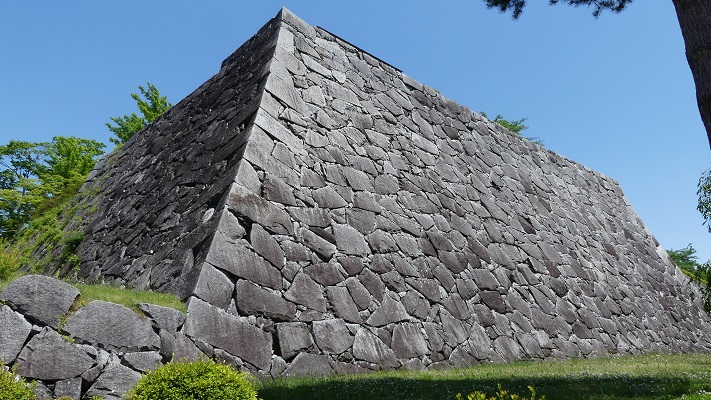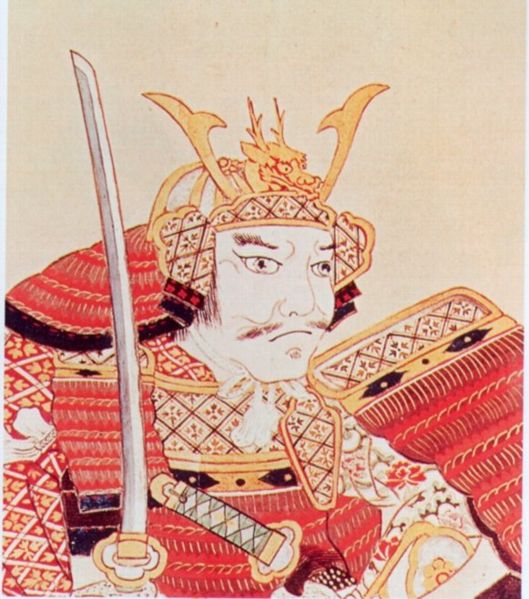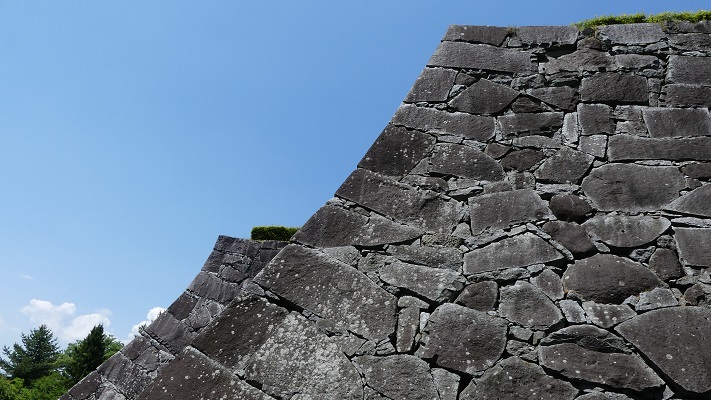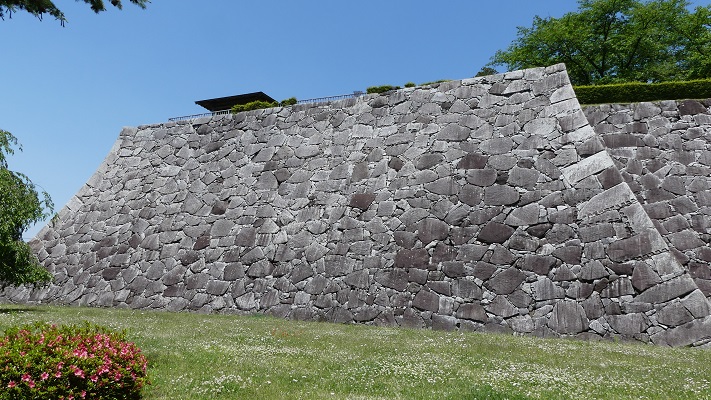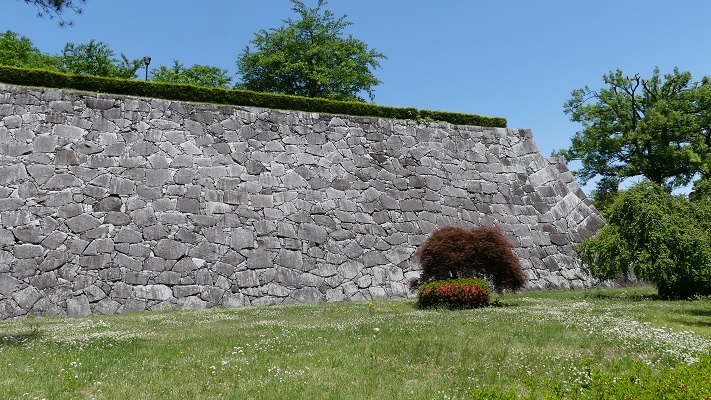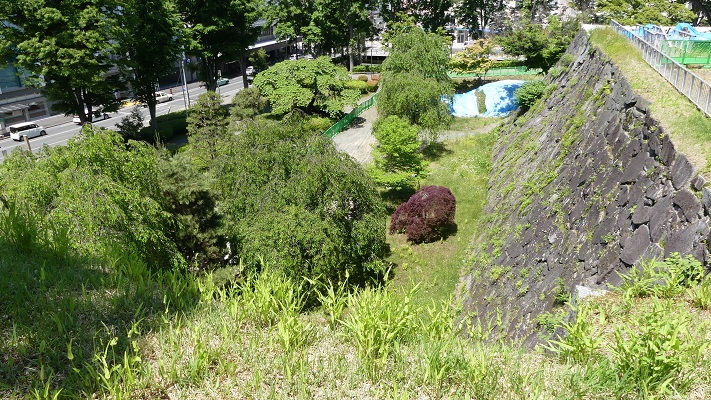
立地と歴史~Location and History
佐倉城は、現在の千葉県佐倉市にあり、かつての江戸の東にあってその防御を担っていました。この城の建設は戦国時代に千葉氏が最初に始めましたが、頓挫していました。江戸時代初期、徳川家康の命により、土井氏がこれを完成させました。
Sakura Castle was located in the east of Edo City for guarding the city, in what is now Sakura City, Chiba Prefecture. The castle’s construction first started by the Chiba clan in the “Sengoku” or Warring States Period, but it was not completed. In the first Edo Period, the Doi clan was ordered to complete it by Ieyasu Tokugawa.
この城は鹿島山という小山にあります。その山は30mの高さしかないのですが、鹿島台地の西端にあたり、南方と西方を川に囲まれていました。更に近くには大きな印旛沼がありました。そのため、この城の防御は北と東に向かって準備されたのです。
The castle was on a hill called Kashimayama. While the hill is only 30m high, it is the western edge of Kashima plateau, surrounded by rivers in the south and west. Moreover, there was the large Inbanuma Lake nearby. So the defense system of the castle was prepared towards the north and east.
明治初期の城周辺の地図~The map around the castle in the first Meiji Period
もう一つのこの城の特徴は、基礎が全て土からできていることです。戦国時代の東日本の城もまた土造りだったのですが、1590年の石垣山城以来、石垣造りとなっていました。江戸時代においては、大きな土造りの城は稀でした。
Another feature of the castle is that the foundation of it was all made of earth. Though castles in eastern Japan in the Sengoku Period were also made of earth, they were built with stone walls since Ishigakiyama Castle in 1590. A large earthen made castle was rare in the Edo Period.
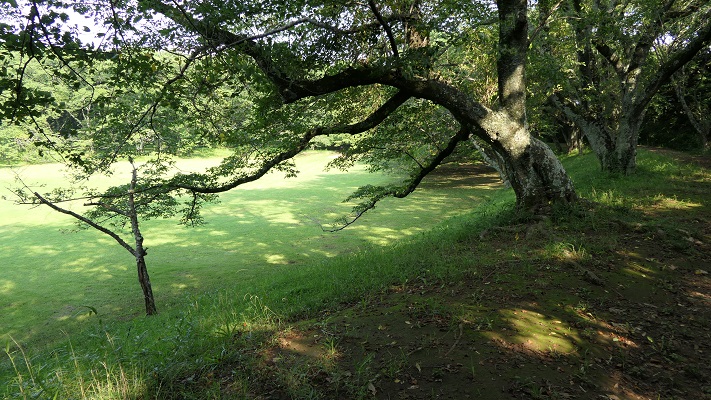
この城は弱くはありません。本丸、二の丸、三の丸といった主要な曲輪が中心から外側に配置されていました。これらの曲輪は高く分厚い土塁に囲まれ、広く深い空堀によって隔たれていました。三の丸の北側には防御のための関門である馬出しがありました。東側には、大手門などの4つの門が本丸に至るまでに控えていました。本丸は、城の中心の曲輪であり、いくつもの櫓があり、そのうち三階建ての櫓は天守と目されていました。
This castle was not weak. Its primary enclosures consisted of Honmaru, Ninomaru and Sannnomaru, from the center to outside. They were each surrounded by high and thick earthen walls, and separated by wide and deep dry moats. There was a defensive gateway barrier called Umadashi in front of the northern side of Sannomaru. On the eastern side, there were four gates such as the Main Gate “Ote-mon” to reach Honmaru. Honmaru is the main enclosure of the castle which had several turrets like the three-story turret regarded as the Main Tower or “Tenshu”.
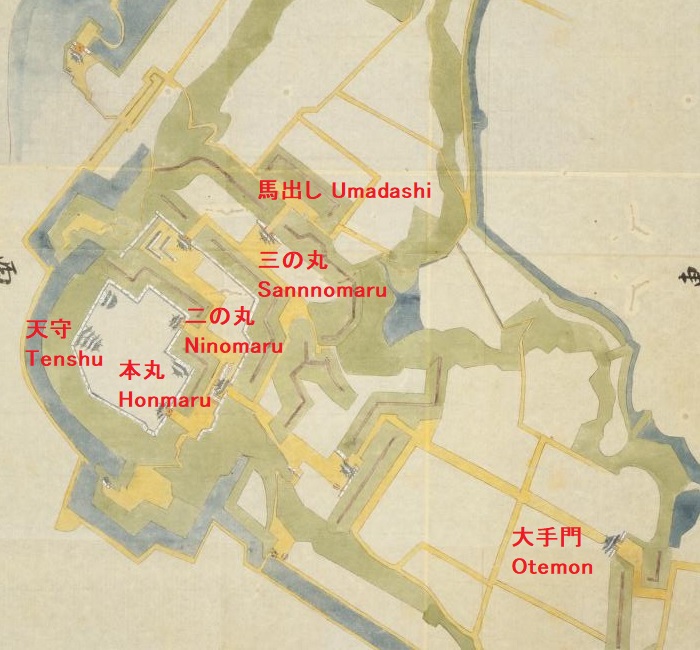
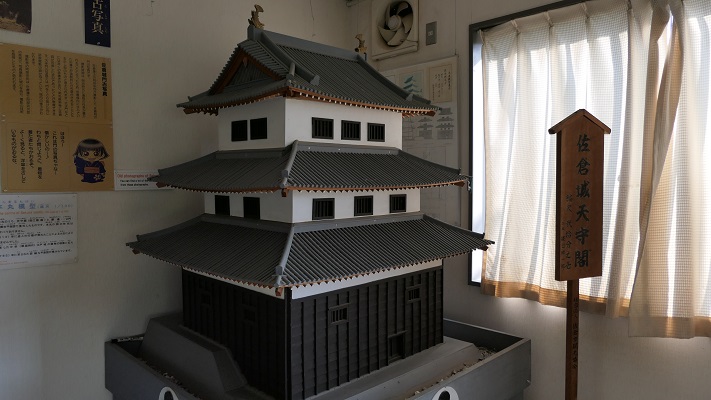
江戸時代中期までに城主は何回も変わりました。江戸時代の後期は堀田氏が城と城下を統治し続けました。佐倉藩はまた、政治のみならず文化面でも著名でした。一例として、幕府の老中の一人であった堀田正睦は幕末の外交を取り仕切る一方で、佐藤泰然を招聘し私立の医学校を設立しました。この学校は後に順天堂大学となります。
The lord of the castle was changed many times until the mid Edo Period. The Hotta clan continued to govern the castle and the town during the late Edo Period. The Sakura Domain also became famous for politics and culture. For example, Masayoshi Hotta, a member of the Shogun’s council of elders, dealt with diplomatic matters in the last days of the Tokugawa Shogunate. Juntendo University comes from a private medical school by Taizen Sato whom Masayoshi invited to Sakura.
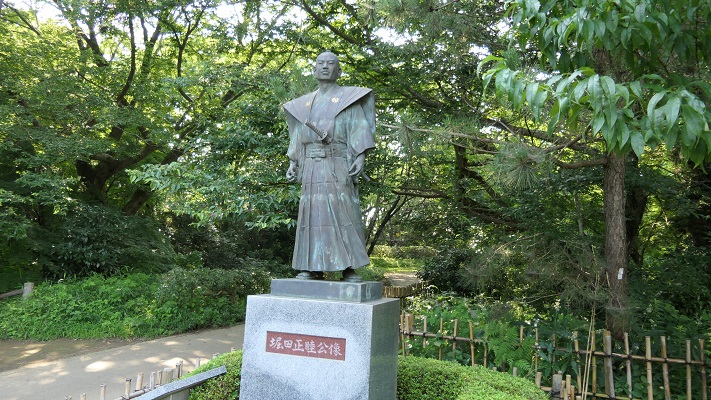

特徴~Features
城周辺の地図~The map around the castle現在、城跡は佐倉城址公園という名の歴史公園として整備されています。電車とバスを使った場合は、城の外郭に当たる椎木曲輪から入っていきます。今は国立歴史民俗博物館がある所です。かつては侍屋敷がここにありました。
Now, the ruins of the castle have been developed as a historical park called Sakura Castle Park. When using the train and bus, you will enter the ruins of the Shiinoki enclosure, located in the outline of the castle, where the National Museum of Japanese History is. Residences for warriors were in it in the past.
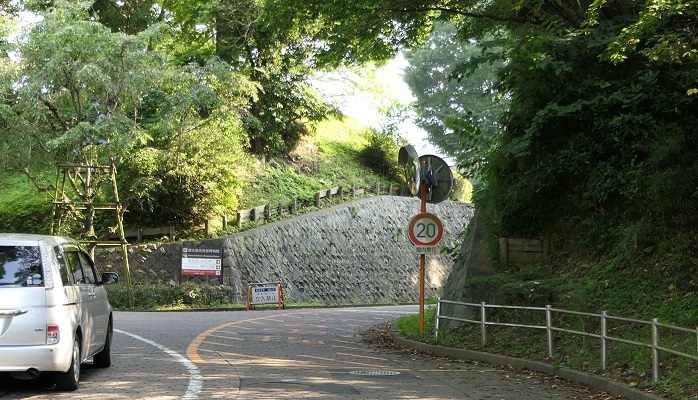
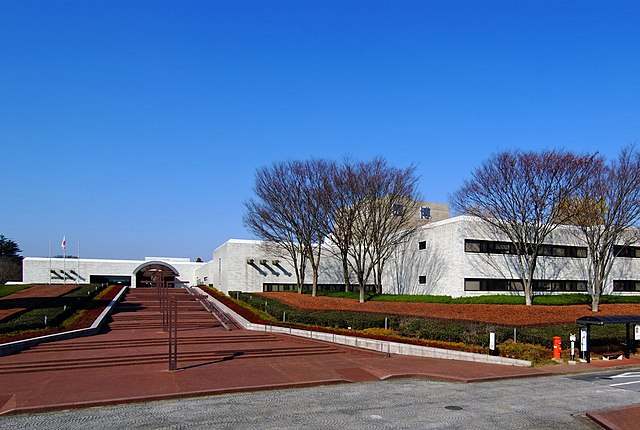
曲輪を超えていくと、四角い形で馬出し跡が空堀とともにあります。この空堀は一時埋められましたが、最近掘り返されました。
Over the enclosure, there is the ruins of the square shaped Umadashi and its dry moat which was once filled, but recently dug again.
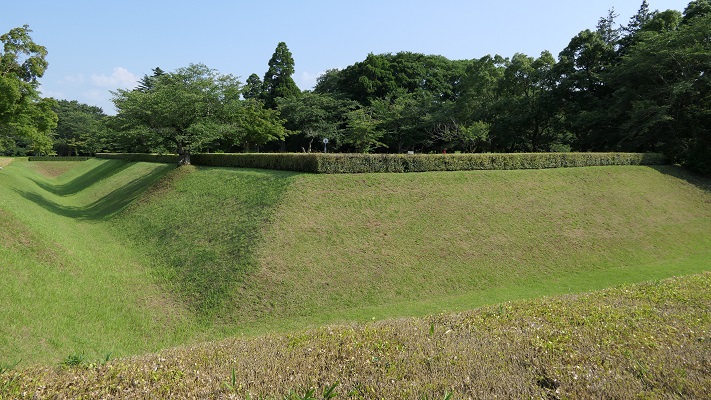
椎木門跡を過ぎて、本丸に入ります。土塁と空堀がよく残されています。本丸の内部は空で、土造りの天守台だけが残されています。
Passing the ruins of the Shiinoki Gate, you can go to Honmaru where its earthen walls and dry moats remain in good condition. The inside is empty, only the earthen base of Tenshu can be seen.
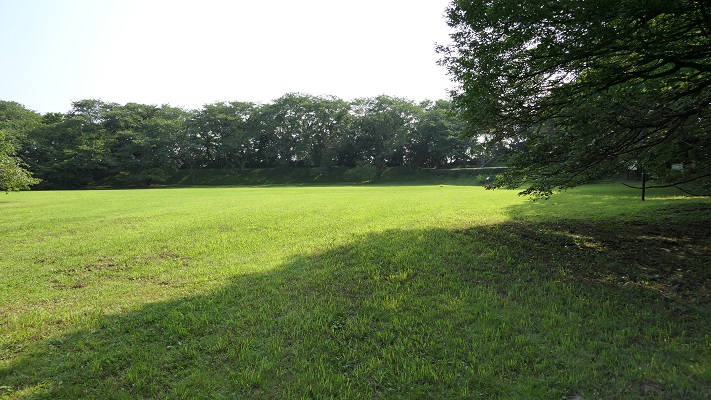
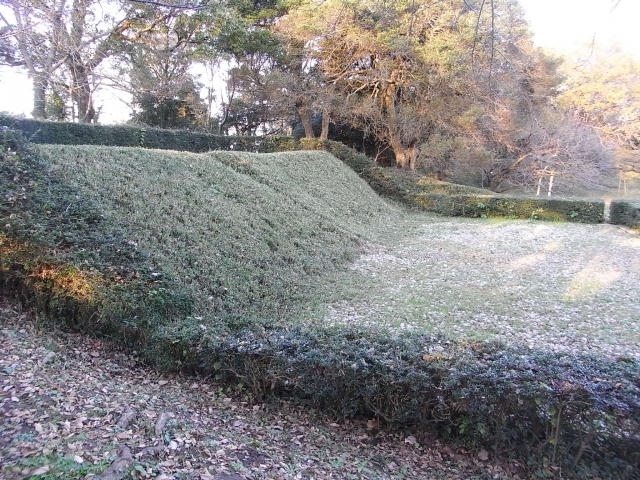
本丸の外側は外水堀に面していて、腰曲輪と呼ばれる小径と、出丸と呼ばれる突き出た曲輪があります。これらにより城の防御力が増しています。
The outside of Honmaru facing outline water moat has trails called the Koshi enclosure and stuck out enclosures called Demaru. They made the castle more defensive.
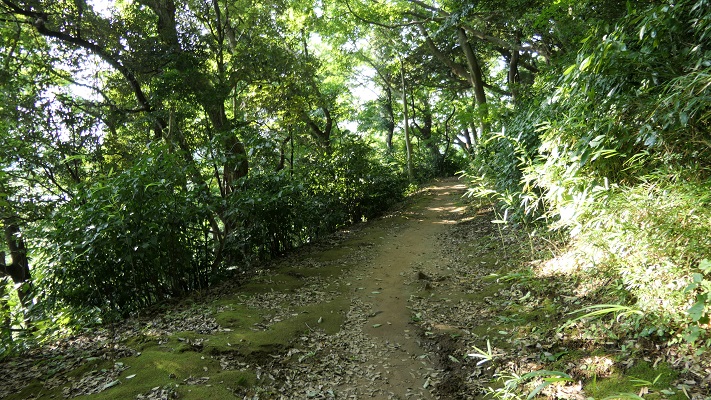
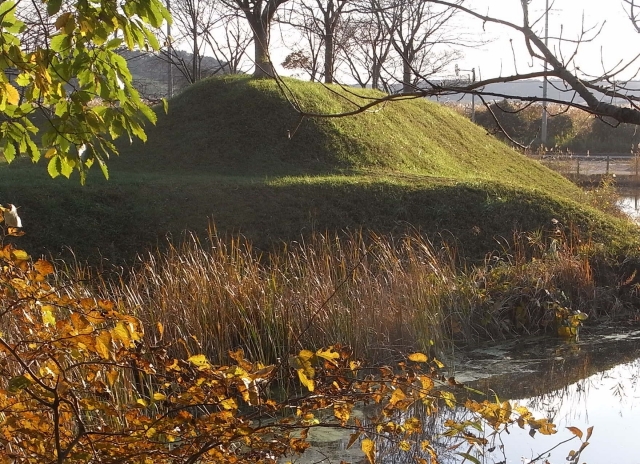
本丸の東には姥ヶ池という池があり、老婆が誤って姫君を死なせてしまったため、彼女自身もその池に身を投げたという伝説があります。
There is a pond called Ubagaike, in the east of Honmaru, that has a legend of an old woman who accidentally killed a princess and threw the woman herself into the pond.

また、三の丸の前にも空堀が残っていて、最近きれいに整備されました。
There is also a remaining dry moat ,in front of Sannnomaru, that has been well developed recently.
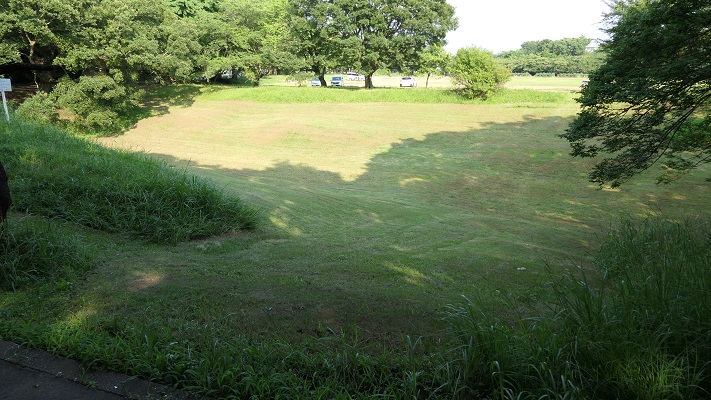
その後~Later History
明治維新後は、城の建物は撤去されました。(天守は既に江戸時代後期に燃えてしまいました。)1873年からは、日本陸軍第2歩兵連隊が城跡を使います。その任務の一つは、江戸時代と同じく、帝都東京を守ることでした。第2連隊の後に入った第57連隊は第2次世界大戦で中国やフィリピンに送られ、大きな損害を受け、多数の戦死者を出しました。戦後、城跡は1962年に佐倉市の史跡に指定されました。
After the Meiji Restoration, the buildings of the castle were demolished (The Tenshu had already been burned out in the late Edo Period). The 2nd infantry regiment of Japanese Army used the ruins since 1873. One of its tasks was to guard Tokyo City just the same as in the Edo Period. The 57th infantry regiment following the 2nd infantry regiment was sent to China and the Philippines in World War II. It suffered huge damages and casualties. After the war, the ruins were designated as a historical site by Sakura City in 1962.


私の感想~My Impression
ここには城と見えるような建物はありません。でも城跡を歩き回ってみれば、この城が自然の地形を生かして作られたこと、土造りの城も十分強力だということがわかっていただけると思います。
There are no building looking like a castle. But after walking around the castle ruins, you can be sure that the castle was built using natural terrain, and that castles made of earth can be just as strong.

ここに行くには~How to get There
車で行く場合:東関東自動車道の佐倉ICまたは四街道ICから約20分かかります。公園に駐車場があります。
JR佐倉駅または京成佐倉駅からバスで行く場合:田町車庫行きグリーンバスに乗り、国立博物館入口バス停まはた国立歴史民俗博物館前バス停で降りてください。
If you want to go there by car: It takes about 20 minutes from the Sakura IC or the Yotsukaido IC on Higashi-kanto Expressway. The park offers a parking lot.
If you want to go there by bus from JR Sakura station or Keisei-Sakura station: Take the Chiba Green bus for Tamachi-shako and take off at the Kokuritsu-Hakubutsukan-Iriguchi bus stop or the Kokuritsu-Rekishi-Minzoku-Hakubutsukan-Mae bus stop.
リンク、参考情報~Links and References
・佐倉城址公園について、佐倉市~Sakura City
・「よみがえる日本の城2」学研(Japanese Book)

